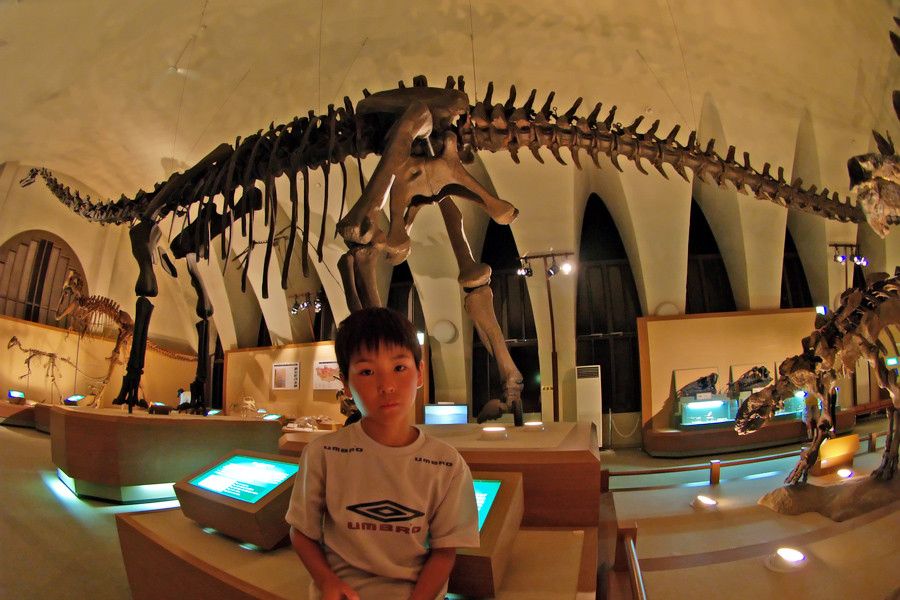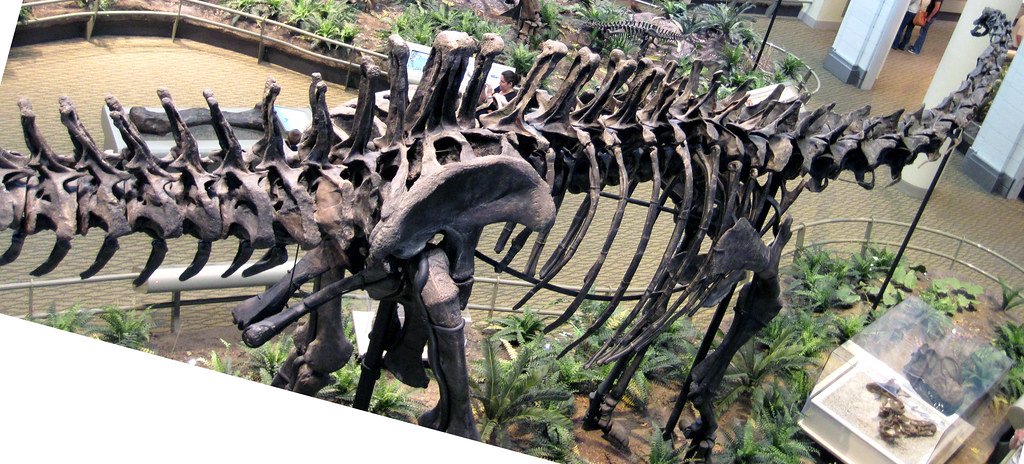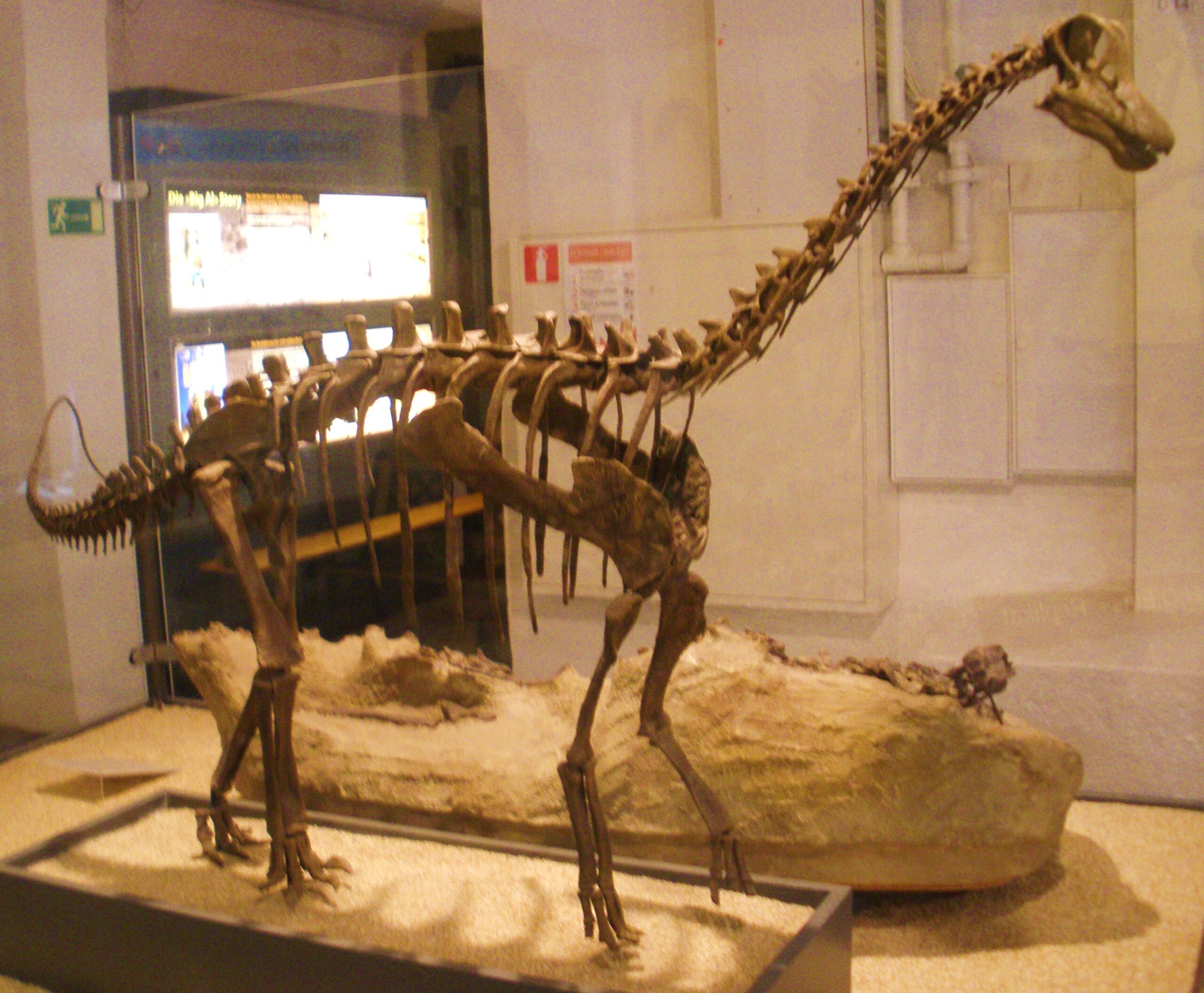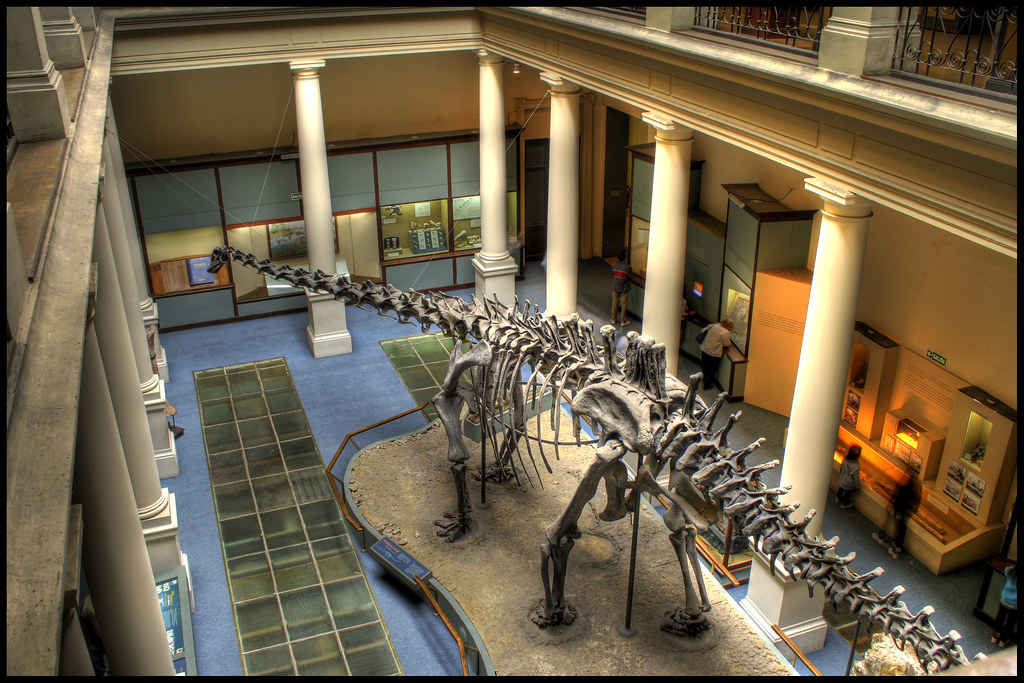Picture this: a 90-foot-long dinosaur standing in an ancient landscape, suddenly whipping its massive tail through the air with such force that it breaks the sound barrier. The crack echoes across prehistoric plains like thunder, potentially loud enough to be heard for miles. This isn’t science fiction – it’s a genuine scientific debate that has paleontologists passionately divided about one of the most iconic dinosaurs that ever lived.
The Diplodocus, with its impossibly long neck and even longer tail, has captivated scientists and dinosaur enthusiasts for over a century. But recently, researchers have been asking a startling question: could this gentle giant crack its tail like a whip at supersonic speeds? The answer has split the paleontology community right down the middle, creating one of the most fascinating controversies in modern dinosaur science.
The Whip-Crack Theory That Started It All

In 1997, paleontologist Nathan Myhrvold dropped a bombshell that would forever change how we think about sauropod behavior. His computer simulations suggested that Diplodocus could whip its tail at speeds exceeding 1,200 miles per hour – faster than the speed of sound itself. The idea was revolutionary and terrifying: imagine a creature the size of three school buses wielding a supersonic weapon.
Myhrvold’s research wasn’t just wild speculation. He used sophisticated mathematical models based on the physics of bullwhips, analyzing how energy could transfer from the massive body down through the increasingly narrow tail segments. The results were mind-blowing, suggesting that the tip of a Diplodocus tail could reach speeds that would create sonic booms powerful enough to stun or even kill predators.
The scientific community’s reaction was immediate and polarized. Some researchers hailed it as a breakthrough that explained mysterious tail injuries found in fossilized remains. Others dismissed it as computer fantasy that ignored biological realities. The battle lines were drawn, and the great tail debate began.
Anatomy of a Potential Sonic Weapon

To understand the controversy, you need to grasp just how extraordinary a Diplodocus tail was. Stretching up to 45 feet in length, it contained over 80 vertebrae – more than twice the number found in most other dinosaurs. Each vertebra was perfectly designed for flexibility, connected by ball-and-socket joints that allowed an incredible range of motion.
The tail’s structure resembled a biological whip in almost every way. It started thick and muscular at the base, gradually tapering to an incredibly thin tip that was barely thicker than a human finger. This design is biomechanically perfect for transferring energy from large to small, exactly like the leather whips used by cowboys and circus performers.
What made the tail even more intriguing were the chevron bones – downward-pointing projections that protected blood vessels and nerves. These bones showed signs of frequent stress and sometimes even fractures, suggesting that Diplodocus regularly subjected its tail to enormous forces. The question became: were these injuries evidence of supersonic whip-cracking, or simply the result of normal daily activities?
The Physics Behind the Controversy

The science of whip-cracking is surprisingly complex and fascinating. When a bullwhip cracks, it’s not the leather hitting itself – it’s creating a small sonic boom as the tip breaks the sound barrier. The energy starts slow at the handle and accelerates as it travels toward the progressively thinner tip, following the same principles that allow tsunamis to grow taller as they approach shore.
Computer models suggest that a Diplodocus could generate even more dramatic effects than any human-made whip. The sheer mass of the animal – estimated at 15 to 20 tons – could theoretically produce enough initial energy to accelerate the tail tip to incredible speeds. If the calculations are correct, the resulting sonic boom would be roughly equivalent to a rifle shot.
However, physics in the real world is messier than computer simulations suggest. Critics argue that the models don’t account for air resistance, muscle fatigue, or the complex biomechanics of living tissue. They point out that creating a sonic boom requires precise timing and technique that even skilled human whip-crackers sometimes struggle to achieve.
Evidence From the Fossil Record

Paleontologists have found compelling clues in fossilized Diplodocus remains that fuel both sides of the debate. Many specimens show evidence of tail injuries, including fractured chevron bones and healed stress fractures in the vertebrae. Supporters of the whip-crack theory argue these injuries are exactly what you’d expect from repeated supersonic tail use.
The distribution of these injuries is particularly telling. They’re most common in the middle sections of the tail, where the forces would be greatest during whip-cracking motion. Some specimens show multiple healed fractures, suggesting that tail injuries were a regular occurrence rather than rare accidents. This pattern seems to support the idea that Diplodocus actively used their tails as weapons.
Skeptics, however, interpret the same evidence differently. They suggest that such injuries could result from normal activities like swimming, walking through dense vegetation, or even mating displays. The healing patterns indicate that these dinosaurs survived their injuries and continued using their tails normally, which might argue against the idea that they were regularly subjecting them to supersonic forces.
Modern Whip-Crackers Weigh In

Professional whip artists and physicists who study whip dynamics have added their voices to the debate, bringing real-world expertise to the discussion. Master whip-crackers like Anthony De Longis, who’s worked on Hollywood films, point out that achieving sonic booms requires incredible precision and practice. Even skilled humans miss the mark frequently, making it questionable whether a dinosaur could reliably achieve supersonic speeds.
The energy requirements are staggering. To crack a whip successfully, you need to transfer energy efficiently along the entire length while maintaining perfect timing. Any disruption in the wave pattern – caused by muscle fatigue, poor technique, or external factors – would prevent the sonic boom from forming. Critics argue that expecting a dinosaur to master this technique consistently is unrealistic.
On the other hand, supporters note that Diplodocus had something human whip-crackers lack: a tail that was permanently attached and controlled by sophisticated muscle systems. Unlike a leather whip, which can twist and behave unpredictably, a dinosaur’s tail was a living, responsive appendage that could potentially be controlled with far greater precision than any manufactured tool.
The Biomechanical Reality Check

Recent biomechanical studies have raised serious questions about whether living tissue could withstand the forces required for supersonic tail-cracking. Dr. Donald Henderson and other researchers have calculated that the stresses involved would likely cause catastrophic tissue damage, potentially tearing muscles, tendons, and even bones. The human body analogy is sobering: imagine trying to crack a whip with your arm moving at 1,200 mph.
The muscle attachments in Diplodocus’ tails show signs of being robust and well-developed, but there are limits to what biological materials can endure. Collagen fibers, which give tendons their strength, have specific breaking points that don’t change regardless of the animal’s size. Critics argue that evolution wouldn’t have produced a weapon that regularly injured its user.
However, some researchers counter that dinosaurs might have evolved specialized tissues or techniques that minimized damage. They point to other animals that regularly subject their bodies to extreme force, like woodpeckers that slam their beaks into trees thousands of times per day without suffering brain damage. Perhaps Diplodocus had similar adaptations that we simply don’t understand yet.
Alternative Theories About Tail Function

While the supersonic debate rages on, paleontologists have proposed numerous other explanations for the Diplodocus tail’s remarkable design. Some suggest it was primarily a communication tool, used to create loud slapping sounds by striking the ground or water. This theory is supported by the fact that many modern animals use tail-slapping for communication, from beavers to alligators.
Others propose that the tail served as a counterbalance, helping these enormous animals maintain stability while feeding or moving. The mathematical precision of the tail’s taper might have been an adaptation for weight distribution rather than whip-cracking. This theory gains credibility when you consider that Diplodocus needed to lift its massive neck high into the air to reach treetops.
A third possibility is that the tail was used for defense, but in a more conventional way – as a massive club rather than a supersonic whip. Even without breaking the sound barrier, a tail weighing several hundred pounds could deliver devastating blows to predators. The flexibility might have been an advantage for accuracy rather than speed.
Computer Simulations vs. Real-World Testing
The reliability of computer models has become a central point of contention in the debate. While Myhrvold’s original simulations were groundbreaking, critics argue that they oversimplify the complex realities of biological systems. Real animals have muscles that fatigue, joints that have limits, and tissues that can tear under extreme stress.
More recent simulations have attempted to address these concerns by incorporating factors like muscle strength limits, joint flexibility constraints, and tissue elasticity. These refined models generally produce more conservative estimates of tail speeds, though some still suggest that supersonic velocities might be possible under ideal conditions.
The challenge is that we can’t exactly build a full-scale Diplodocus to test these theories. Some researchers have created scaled-down models and robotic tails, but the physics doesn’t necessarily scale proportionally. What works at one-tenth scale might fail catastrophically at full size, leaving us to rely on indirect evidence and educated speculation.
The Predator-Prey Arms Race

If Diplodocus really could crack its tail at supersonic speeds, it would represent one of the most dramatic examples of evolutionary arms racing ever discovered. The Late Jurassic period, when these dinosaurs lived, was home to formidable predators like Allosaurus, 30-foot-long killing machines armed with razor-sharp teeth and powerful claws.
A supersonic tail would have been the ultimate deterrent against such predators. The sound alone would be terrifying, but the actual impact could potentially be lethal. Some researchers have calculated that a supersonic tail-crack could generate forces equivalent to being hit by a small car traveling at highway speeds.
However, skeptics point out that such an extreme adaptation might have been unnecessary. Diplodocus already had significant advantages over predators, including massive size, herd behavior, and the ability to rear up on its hind legs. Adding a supersonic weapon to this arsenal might have been evolutionary overkill – like bringing a bazooka to a knife fight.
Sound Production and Communication

Even if Diplodocus’ tails couldn’t break the sound barrier, they might still have been impressive sound-producing organs. Recent research has explored the possibility that these dinosaurs used their tails to create complex acoustic signals for communication. The long, flexible structure could potentially produce a wide range of sounds, from low-frequency rumbles to sharp cracks.
Modern elephants use infrasonic communication to coordinate herds across vast distances, and some researchers suggest that Diplodocus might have employed similar techniques. The tail’s structure could have functioned like a biological percussion instrument, creating rhythmic patterns that carried meaning across prehistoric landscapes.
This theory gains support from the social behavior patterns observed in modern sauropod relatives. Many large herbivores rely heavily on acoustic communication for everything from mating displays to danger warnings. A tail capable of producing loud, distinctive sounds would have been invaluable for coordinating group movements and maintaining social bonds.
The Role of Tail Clubs in Other Dinosaurs

The debate over Diplodocus tails has sparked renewed interest in tail weaponry throughout the dinosaur family tree. Ankylosaurus possessed massive tail clubs that could deliver bone-crushing blows, while Stegosaurus wielded formidable tail spikes called “thagomizers.” These examples prove that dinosaurs did evolve sophisticated tail-based weapons.
However, these other tail weapons were fundamentally different from the proposed Diplodocus whip. They relied on mass and leverage rather than speed and precision. The difference is like comparing a medieval mace to a modern fencing sword – both are effective weapons, but they operate on completely different principles.
Some paleontologists argue that this diversity of tail weapons supports the supersonic theory. If evolution produced such a variety of tail-based defenses, why wouldn’t it also produce a supersonic whip? Others counter that the existence of conventional tail weapons makes the supersonic adaptation seem unnecessary and unlikely.
Recent Discoveries and New Evidence
The discovery of exceptionally well-preserved Diplodocus specimens in recent years has provided new insights into the tail debate. Some fossils show previously unknown details about muscle attachment points and joint structure, offering clues about how these tails actually functioned in life.
Perhaps most intriguingly, researchers have found evidence of what might be sound-producing structures in the tail vertebrae. Hollow chambers and resonating cavities could have amplified sounds created by tail movements, supporting theories about acoustic communication. These discoveries suggest that Diplodocus tails were far more sophisticated than previously imagined.
Advanced CT scanning techniques have also revealed internal structures that were invisible to earlier researchers. The complex network of air spaces and muscle attachment points paints a picture of a tail that was both incredibly strong and surprisingly lightweight – characteristics that would be advantageous for either whip-cracking or sound production.
The Ongoing Scientific Debate

Today, the paleontological community remains deeply divided on the supersonic tail question. Major conferences regularly feature heated debates between supporters and critics, with new research constantly adding fuel to both sides of the fire. The controversy has become one of the most enduring and passionate disputes in dinosaur science.
What makes this debate particularly fascinating is that both sides present compelling arguments backed by solid scientific reasoning. The whip-crack supporters have physics and computer models on their side, while the skeptics have biomechanical reality and practical constraints. It’s a perfect example of how scientific progress often involves prolonged periods of uncertainty and disagreement.
The controversy has also inspired new research methods and technologies. Scientists are developing increasingly sophisticated ways to study fossil biomechanics, test theoretical limits of biological materials, and simulate complex prehistoric behaviors. In many ways, the debate has pushed the entire field forward, regardless of which side ultimately proves correct.
What Modern Animals Tell Us
Looking at living animals provides both support and skepticism for the supersonic tail theory. No modern animal is known to crack any body part at supersonic speeds, though some come surprisingly close. Mantis shrimp can punch at speeds approaching 50 mph, creating cavitation bubbles that collapse with tremendous force. The closest modern analogy might be the way some lizards use their tails for defense. Monitor lizards can whip their tails with surprising speed and accuracy, delivering painful blows to predators. However, these movements are nowhere near supersonic speeds, and the lizards’ tails are much smaller and lighter than those of Diplodocus.
Interestingly, some modern animals do create sonic booms, though not with body parts. Certain shrimp species can snap their claws so quickly that they create cavitation bubbles that collapse with a sound like a gunshot. This proves that biological systems can produce supersonic effects, though the mechanisms are quite different from the proposed Diplodocus tail-crack. The supersonic tail debate represents more than just an academic disagreement about prehistoric anatomy – it embodies the thrilling uncertainty that makes paleontology so captivating. Whether Diplodocus could truly crack their tails at supersonic speeds may never be definitively resolved, but the quest for answers has revolutionized our understanding of these magnificent creatures.
The evidence remains tantalizingly inconclusive. Computer models suggest it’s theoretically possible, fossil evidence shows signs of extreme tail use, and the physics of whip-cracking supports the basic concept. Yet biomechanical constraints, tissue limitations, and the lack of modern analogies raise serious doubts about whether such behavior was realistic or practical.
Conclusion

Perhaps the most remarkable aspect of this controversy is how it has transformed our perception of these “gentle giants.” Rather than slow, plodding creatures that relied solely on size for protection, we now envision dynamic animals capable of sophisticated behaviors and potentially devastating defensive capabilities. The debate has breathed new life into creatures that died out 150 million years ago.
As new technologies emerge and more fossils are discovered, we may eventually solve the mystery of the Diplodocus tail. Until then, the controversy continues to captivate scientists and dinosaur enthusiasts alike, reminding us that even after more than a century of study, these ancient giants still have secrets to reveal. What do you think – could a creature evolve the ability to crack its tail at supersonic speeds?




